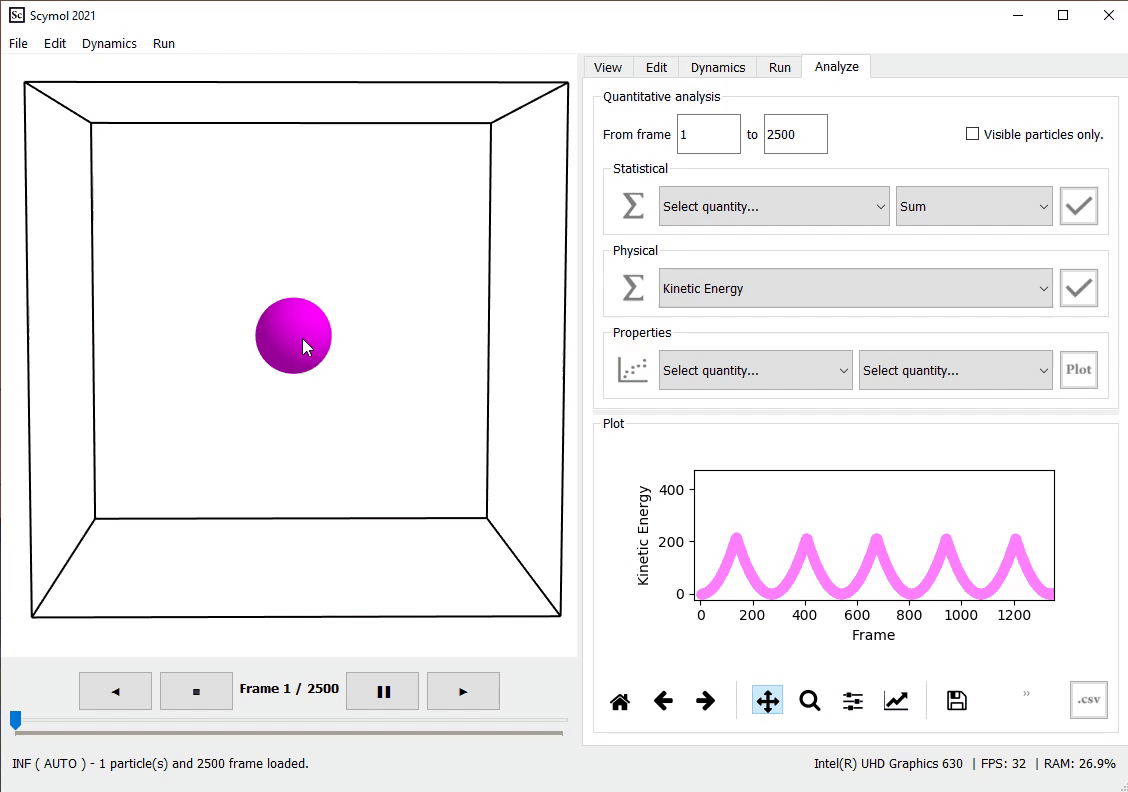Example 1.
In this example, we assume that we have a simple system of 1 sphere bouncing indefinitely (due to perfectly elastic collisions). The sphere is initially placed at a certain height
and subject to a constant gravitational force that pulls it downwards. We want to estimate the kinetic energy of the sphere throughout its trajectory using the following expression:
$$K_e=\frac{1}{2N}\sum_{i}^{N}{m_i\left(V_{x,i}^2+V_{y,i}^2+V_{z,i}^2\right)\ },$$
where \(K_e\) is the kinetic energy of the particles at a specific time step,
\(N\) is the total number of particles, \(m_i\) is the mass of the particle, and \(V_{x,i}\), \(V_{y,i}\), and \(V_{z,i}\) are the particle velocities.
We would like to use SI units, and in the case of this example the
meter (\(m\)), the kilogram (\(Kg\)), and the second (\(s\)) will be enough to define the problem.
There is no need to define other fundamental units (see Table 1) as we will not be measuring any additional quantity that relies on them.
We start by opening Scymol and building 1 particle positioned at (10, 0, 0). We proceed to set the boundary box's size to 20 in the x, y, and z axis.
We can establish that the meter is the measuring unit for length or distance in our system; our sphere is therefore located at a height of 10 meters above the surface.
We proceed to set the sphere's Mass equal to 2.5. By the magnitude 2.5 we are implying that it is \(2.5 Kg\).
We know that in SI the gravitational acceleration equals to \(9.81 m/s^2\), and so we set the acceleration acting on the ball to be equal to \(9.81\).
Here, by entering the number \(9.81\), we are implicitly saying that the second is our unit used to measure time.
If we wanted it to be the millisecond, for example, we would have to type in \(9.81×10^{-6} m/ms^2\).
A plot of the kinetic energy of the sphere throughout its trajectory is shown in Figure 1.

Figure 1. The kinetic energy of our sphere just before reaching the surface will be equal to its gravitational potential energy at the beginning of the simulation, given by \(P_e=mg∆h=245.25 J\), where \(m=2.5\),\(g=9.81\), and \(∆h=10\). The Joule is the derived unit of energy in SI units equivalent to \(1 Kg m^2/s^2\).